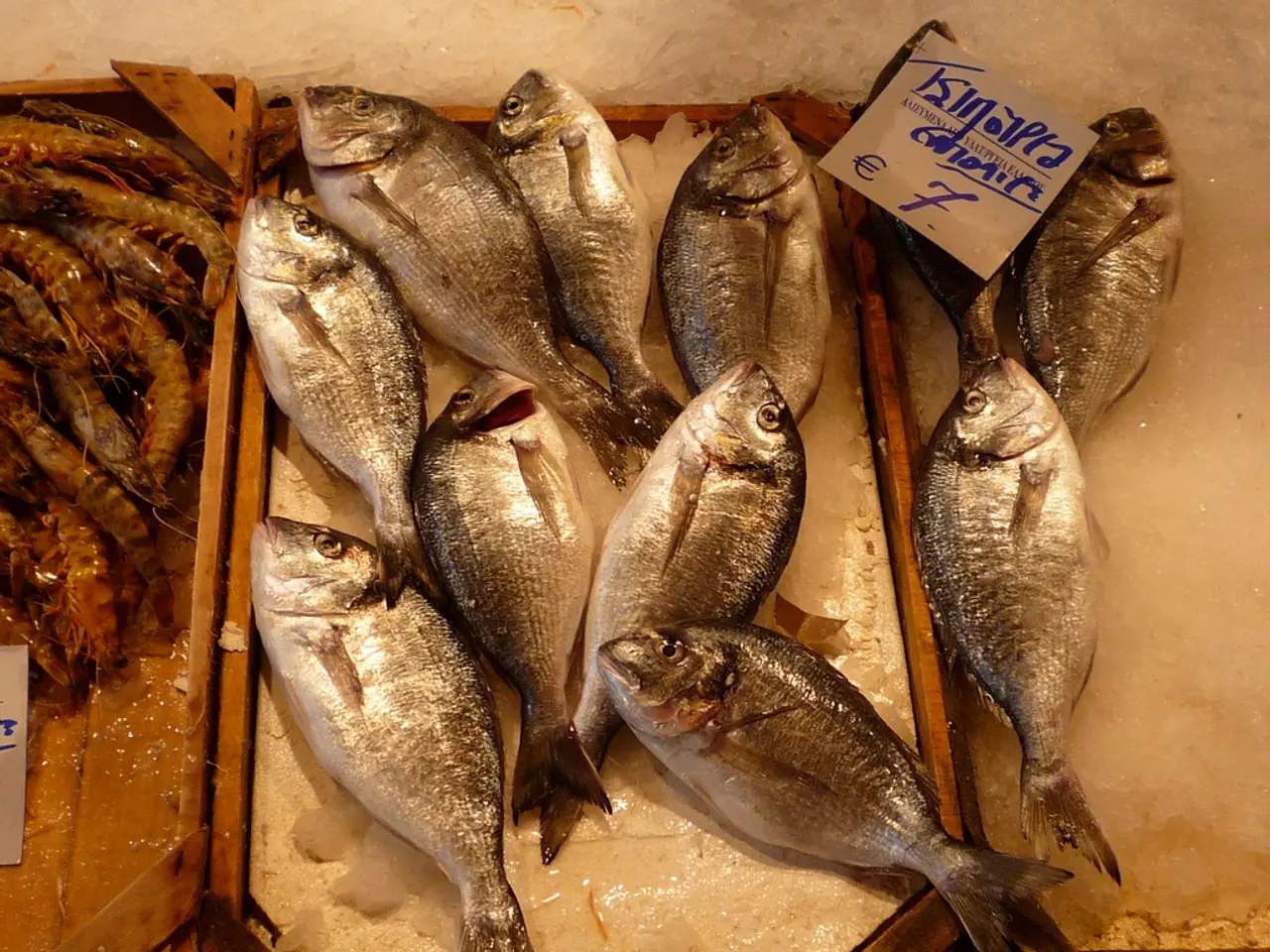Caring for Peppermint Shrimp: A Comprehensive Guide
In the vibrant world of saltwater aquariums, two popular invertebrates often share the same habitat: the Peppermint Shrimp and the Trochus Snail. These creatures, known for their complementary roles, make an excellent addition to any reef tank.
Adam, a seasoned reef keeper since 2010, advocates for a philosophy that emphasises building tanks around what one enjoys, rather than following trends. This approach is particularly evident in his care guide for Peppermint Shrimp, a key member of the clean-up crew.
Peppermint Shrimp, with their attractive red and white striped patterns, are native to the tropical waters of the Western Atlantic and Caribbean. They thrive in aquariums with a minimum size of about 10 gallons, and their ideal specific gravity (salinity) ranges between 1.023 to 1.026. The shrimp are adaptable to low to high light conditions and do well in aquariums with ample live rock for hiding spots and food scavenging.
Aiptasia anemones can be a nuisance in reef tanks, but Peppermint Shrimp are effective natural predators. However, success in controlling these anemones may vary among individual shrimp, and they should be part of a broader management plan.
Peppermint Shrimp are carnivores, relying on a varied diet of different meaty foods such as mysis shrimp and brine shrimp. To support successful molting and overall health, provide a balanced diet and a stress-free environment. Maintain excellent water quality through regular water changes (10-25% every 2-4 weeks) and consistent testing of water parameters.
Molting is a vulnerable process for Peppermint Shrimp, so it's crucial to offer plenty of hiding places during this period. The ideal water temperature for these shrimp is between 75°F to 80°F (23°C to 27°C). Maintain ammonia and nitrite levels at 0 ppm, and nitrates below 20 ppm.
Peppermint Shrimp are generally considered peaceful additions to the aquarium and can be kept singly or in groups. Some compatible tank mates include Clownfish, Cardinalfish, Small Wrasse, Firefish, Tangs, Dwarf Angelfish, and Reef-safe species. Trochus snails are another popular choice, as they graze on algae and help control algae growth on rocks and glass.
The Trochus Snail, with its striking shell, is a herbivore that thrives in stable marine conditions typical of reef tanks. Ideal parameters include salinity around 35 ppt, temperature around 24–26°C, pH roughly 8.1 to 8.4, and proper calcium levels around 420–470 ppm. They require a sufficient algae or supplemented vegetable diet and do well on live rock surfaces and tank glass.
While exact tank size is flexible, a properly cycled reef tank with adequate space (at least 20 gallons recommended) and stable parameters is necessary. Avoid sudden phosphate spikes or imbalances, as these can stress snails and other reef inhabitants. Trochus snails are sensitive to poor water quality and high phosphate levels, so it's important to monitor water quality closely.
In conclusion, by following these guidelines, you can create a thriving environment for both Peppermint Shrimp and Trochus Snails in your saltwater aquarium. These creatures will not only add beauty to your tank but also contribute significantly to its cleanliness and overall health.
[1] Source: Reef2Reef Forum Discussion on Trochus Snail Care and Maintenance. Retrieved from https://www.reef2reef.com/threads/trochus-snail-care-and-maintenance.129870/
In line with Adam's philosophy, one could design their home-and-garden to incorporate a lifestyle that includes a saltwater aquarium, housing not only Peppermint Shrimp but also Trochus Snails. These pets, while different in diet and habitat preferences, work together to maintain a clean and vibrant reef tank, making a picturesque addition to the home.




